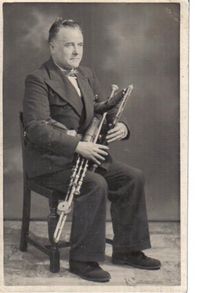Annotation:Parnell's March
Back to Parnell's March
PARNELL’S MARCH. AKA and see "Julie's," "Micilín Conlon's," "Sweet Marie." Irish, March (6/8 or 12/8 time). G Major. Standard tuning (fiddle). AB. The tune was recorded by piper Joe McKenna under the title “Rowsome’s Jig(s),” referring to his teacher, Leo Rowsome, although Rowsome catagorized the tune as a 'march' on his 1926 recording for Columbia Records. Rowsome used the tune as one of his theme pieces for radio broadcasts in the 1950's and 1960's, notes Don Meade.

Harry Bradley informs the tune has a long association with the uilleann pipes, having been included in Tadhg Crowley’s 1936 pipe tutor (“published the same year as Leo Rowsome’s tutor; there hadn’t been a tutor for the pipes in over a hundred years and all of a sudden two fall out of the hat in the same year!”). He believes Crowley may have borrowed heavily from Highland Bagpipe repertoire, and thinks “Parnell’s March” may have had a pipe band association.
Sol Foster (Ir-trad 12/15/05) notices the tune has a strong resemblance to Newfoundland fiddler Rufus Guinchard’s tune “Uncle Manual Milks the Cow.” Foster says the title was invented by Guinchard, and that the tune “was just a nameless one floating around the northwest portion of Newfoundland in the early 1900’s.” The march has also entered tradition in the north of England, from the influential recording by Taylor, Hutton and Atkinson.
Source for notated version:
Printed sources:
Recorded sources: Columbia DB 4121 (78 RPM), Leo Rowsome (1926). Topic TSCD 669, Willy Taylor, Joe Hutton & Will Atkinson (et al) – “Ranting and Reeling: Dance Music of the north of England” (1998. Atkinson {b. 1908} of Crookham, Northumberland, was an harmonica player, Taylor a fiddler and Hutton a Northumbrian small-piper). Wildgoose Records, The Old Swan Band - "Fortyssimo" (2014).
See also listing at:
Alan Ng's Irishtune.info [1]
Hear accordion player Dan Gurney's version, learned from Fr. Charlie Coen, at the Internet Archive [2]
See Paul Cranford's standard music notation [3]
